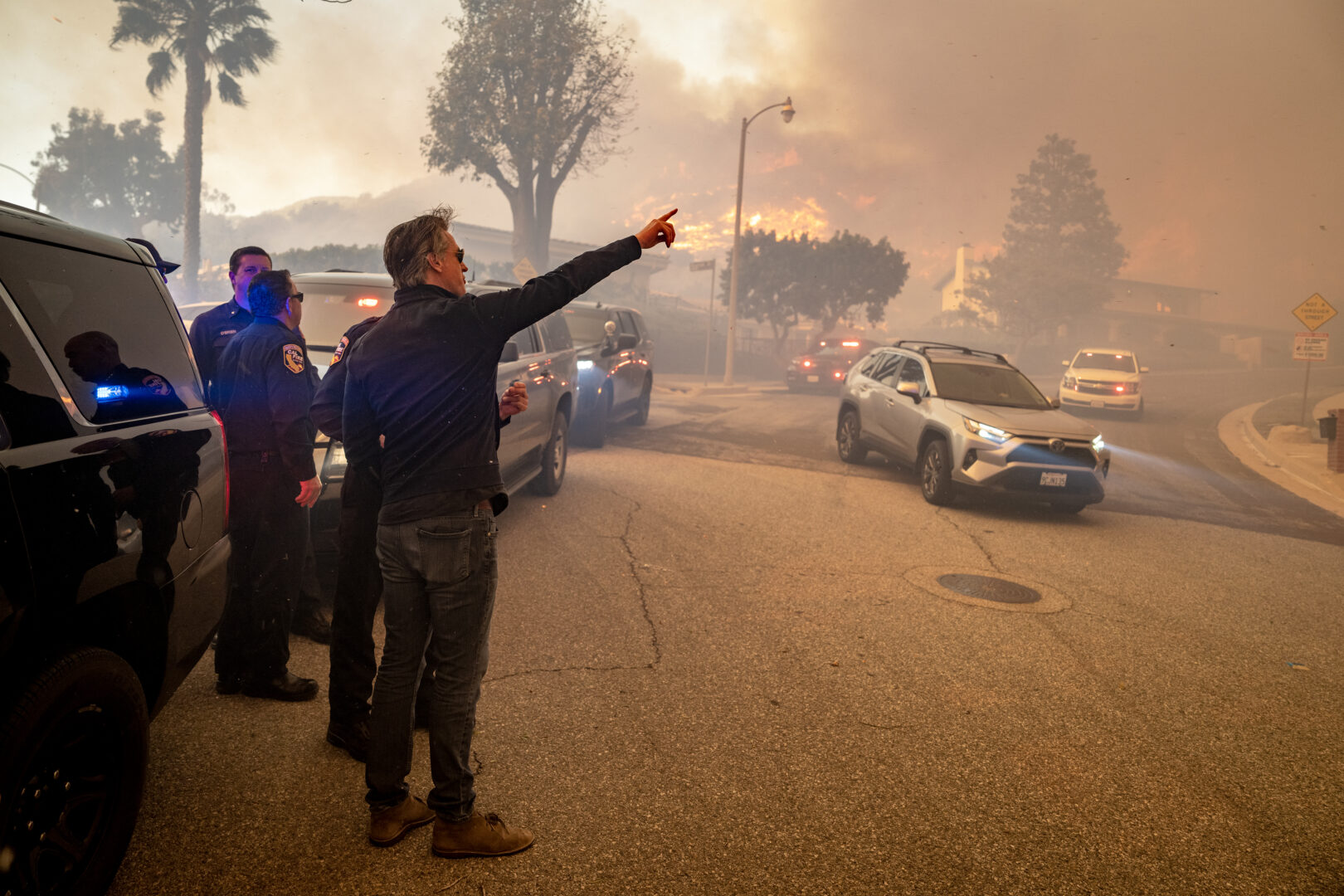Governor Newsom proclaims state of emergency, meets with first responders in Pacific Palisades amid dangerous fire weather
What you need to know: Much of Southern California is facing “life-threatening” winds and extreme fire risk. California continues to mobilize resources and support local communities as they respond to this severe weather.
PACIFIC PALISADES – As Southern California faces dangerous winds and extreme fire weather through Thursday, Governor Gavin Newsom visited Pacific Palisades today and met with local and state fire officials to support their response to the Palisades Fire.
While on the ground in Pacific Palisades, the Governor proclaimed a state of emergency to further support the communities impacted by this fire. Text of the emergency proclamation is available here.
Earlier Tuesday, Governor Newsom announced that California has secured a Fire Management Assistance Grant (FMAG) from the Federal Emergency Management Agency (FEMA) to help ensure the availability of vital resources to suppress the fire burning in Pacific Palisades.
The Palisades Fire broke out earlier today and, as of 5 p.m., has burned more than 1,260 acres and forced the evacuation of thousands of people. While in Pacific Palisades, the Governor received a briefing on the fire, as well as the ongoing severe weather threatening much of Southern California.
The National Weather Service continues to forecast very high dangerous winds for Los Angeles, Orange, Ventura, San Diego, San Bernardino and Riverside counties through 6 p.m. tomorrow night, with isolated gusts reaching up to 100 miles per hour in Los Angeles County.

This is a highly dangerous windstorm that’s creating extreme fire risk – and we’re not out of the woods. We’re already seeing the destructive impacts with this fire in Pacific Palisades that grew rapidly in a matter of minutes.
Our deepest thanks go to our expert firefighters and first responders who jumped quickly into fighting this dangerous fire. If you’re in Southern California, please pay attention to weather reports and follow any guidance from emergency officials.
Governor Gavin Newsom
Yesterday, Governor Newsom directed state departments to coordinate and strategically position fire engines, handcrews, aircraft and additional support in key areas, including:
- Prepositioning 65 local government fire engines, 7 water tenders, 7 helicopters, 9 dozers and more than 105 specialized personnel in Los Angeles, Riverside, Orange, San Bernardino, San Diego, Santa Barbara, and Ventura counties through the state’s Fire and Rescue Mutual Aid System managed by Cal OES.
- Strategically moving CAL FIRE firefighting resources from Northern California into Southern California, including 45 additional fire engines and six additional hand crews to Los Angeles, Orange, Riverside, San Bernardino, San Diego, San Luis Obispo, and Ventura counties.
- Staffing additional aerial firefighting resources in the region.
- Augmenting regional intelligence, dispatch and investigative resources.

Wildfire quick tips
- Sign up for free emergency alerts at ready.ca.gov: You can choose how to get alerts sent to you when you sign up, including cell phone, home phone, email, text messages, and in some cases, TTY devices.
- Make a plan: Wildfires may cause power outages, so have backup plans for electrical medical devices and medicines that must be refrigerated and have a battery-powered radio so you can hear emergency updates.
- Don’t wait, evacuate: Listen and watch for evacuation warnings and orders. An evacuation warning means get ready to leave. An evacuation order means leave immediately.
Wind safety quick tips
- Watch out for downed power lines: Never touch or drive over a fallen power line. If a power line falls on your vehicle, call 911 and stay inside until trained personnel can remove it.
- Stay inside: If you are outside during high winds, find shelter immediately. Stay away from trees and power lines, and watch for flying debris.
- Slow down: Keep a safe distance from vehicles in lanes next to you and watch for objects blowing across the road.
For more emergency preparedness tips and to learn more about active emergencies, visit ready.ca.gov.
